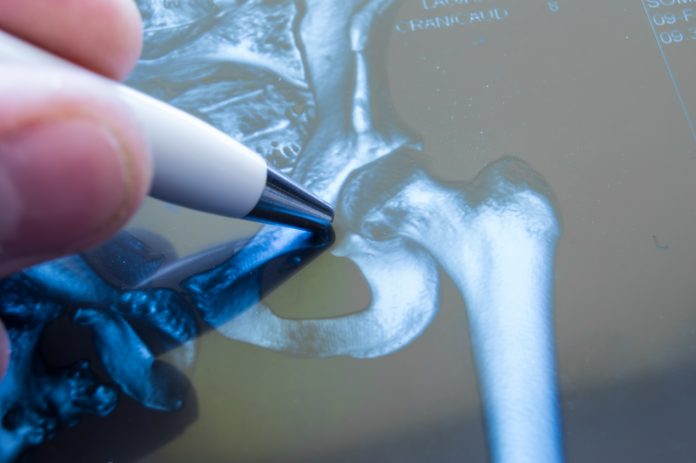Afshin Attari, Senior Director of Public Sector & Unified Platforms at Exponential-e, describes driving the digital-first future of pathology through partnerships
In case you haven’t heard, pathology – the study of disease – has maintained a fairly high profile in the last 18 months. We all know why that’s been the case, of course, but the announcement that the NHS will receive a £5.4 billion cash injection from the UK government to support further pandemic response means its profile will remain high for some time yet. The reason is that a large portion of these funds will go towards technologies that support digital pathology, so the service can drive efficiencies in patient care and support health professionals in working through the COVID-19 backlog.
Right now, the pathway for patient diagnosis is an analogue process involving tissue preparation and the use of film slides to study specimens. However, digital pathology presents the opportunity to convert these slides to a digital format and digitise a huge range of data sets produced in research. It’s an incredibly exciting technology because it sets the foundations for the computerised analysis of huge reams of data, which in turn allows health professionals to draw valuable insights on diseases, advance patient diagnostics and enhance patient care, in a more efficient and accurate process.
The technology behind digital pathology can be complex though, and there are some key challenges to overcome before we see widespread implementation, which I’d like to take the opportunity to explain.
Improving patient care with digital pathology
First, let’s look at the benefits and opportunities digital pathology offers, not only for the health service, but for patient outcomes. From a diagnostic perspective, it protects against the misidentification of disease and makes wider collaboration between multi-disciplined teams, even those working remotely, far more straightforward. Health professionals can consult more colleagues and request second opinions with ease, without having to share paper copies, enabling a much faster and more accurate diagnosis and, in turn, make subsequent patient care more effective.
AI and ML tools can also present the opportunity to use the digital data pool created by digital pathology to look for trends and patterns. This will allow consultants, for example, to identify symptoms, causes and ailments of diseases much quicker and develop more accurate treatment pathways at an earlier stage, enabling much better patient treatment and outcomes.
The power of these immense computational models means health professionals can identify trends in a fraction of the time that a human can, allowing them to concentrate more time on patient care.
Building resilience and data protection
Technology and digital transformation are also bringing complexity, however. Many businesses, including organisations within the health service, have brilliant intent when it comes to implementing new digital processes, but face challenges when it comes to execution and adoption.
Implementing and building resilient and secure infrastructure to hold such large, sensitive data pools, for example, can be tricky. And that’s before you consider how to assure constant availability for consultants who work around the clock, and how to make sure your data footprint aligns with data sovereignty and privacy regulations.
Turning intent into execution
With all these challenges to overcome, many digitally savvy healthcare organisations are turning to expert partners to help them implement a resilient and secure technical platform that is fit for purpose. They do so because they recognise there is a lot of complexity in delivering consistency of infrastructure and network across any healthcare digitisation process, and they need a team with the skills to support a software-based approach to infrastructure and networking.
After all, let’s not forget that the stakes are high – both in terms of ensuring patient confidentiality, and most importantly, providing world-leading healthcare. Taking away the complexity of implementing fit-for-purpose infrastructure and delivering the sector-specific expertise needed means healthcare professionals and patients can concentrate on getting the best out of digital pathology.
Choosing the right partner is key, though. Plenty can support with designing, implementing and operating the tech platform required for digital pathology. But opting for one that has actual experience and familiarity with the industry itself, not just the tech, is imperative if you’re to guarantee patient success. Partners with industry-specific experience have the prowess to marry the capabilities of those working directly in the sector with the tech knowledge required to execute new digital processes.
“AI and ML tools can also present the opportunity to use the digital data pool created by digital pathology to look for trends and patterns. This will allow consultants for example to identify symptoms, causes and ailments of diseases much quicker and develop more accurate treatment pathways at an earlier stage, enabling much better patient treatment and outcomes.”
Digital pathology is only the beginning
What’s so exciting about these new technology platforms is that their capabilities aren’t limited to pathology. The process behind digital pathology could be applied to a range of healthcare services such as radiology or other fields that work with large data sets in the near future.
Such platforms could also be key to overcoming similar health crises to the one we’re experiencing now, because they ensure patient data is curated into widely shareable formats for health professionals, liberating ways of working, and enhancing the sharing of data and patient information. It’s time we harnessed their potential to realise the sector’s long-held vision of digitally enabled healthcare.











